Here is a panorama of he completed slab about 30 minutes before the concrete workers departed. The form boards are still in place and we were going to wait a day before pulling the forms off.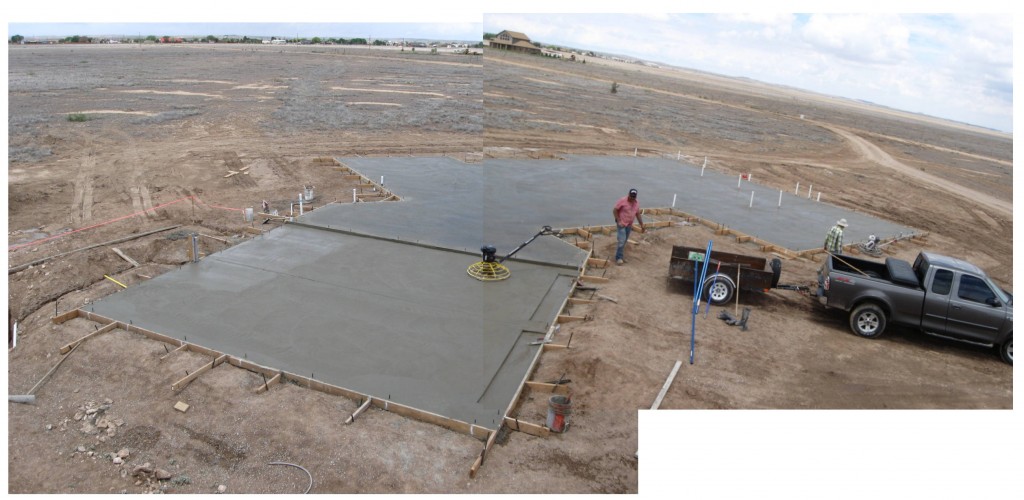
Completed Slab
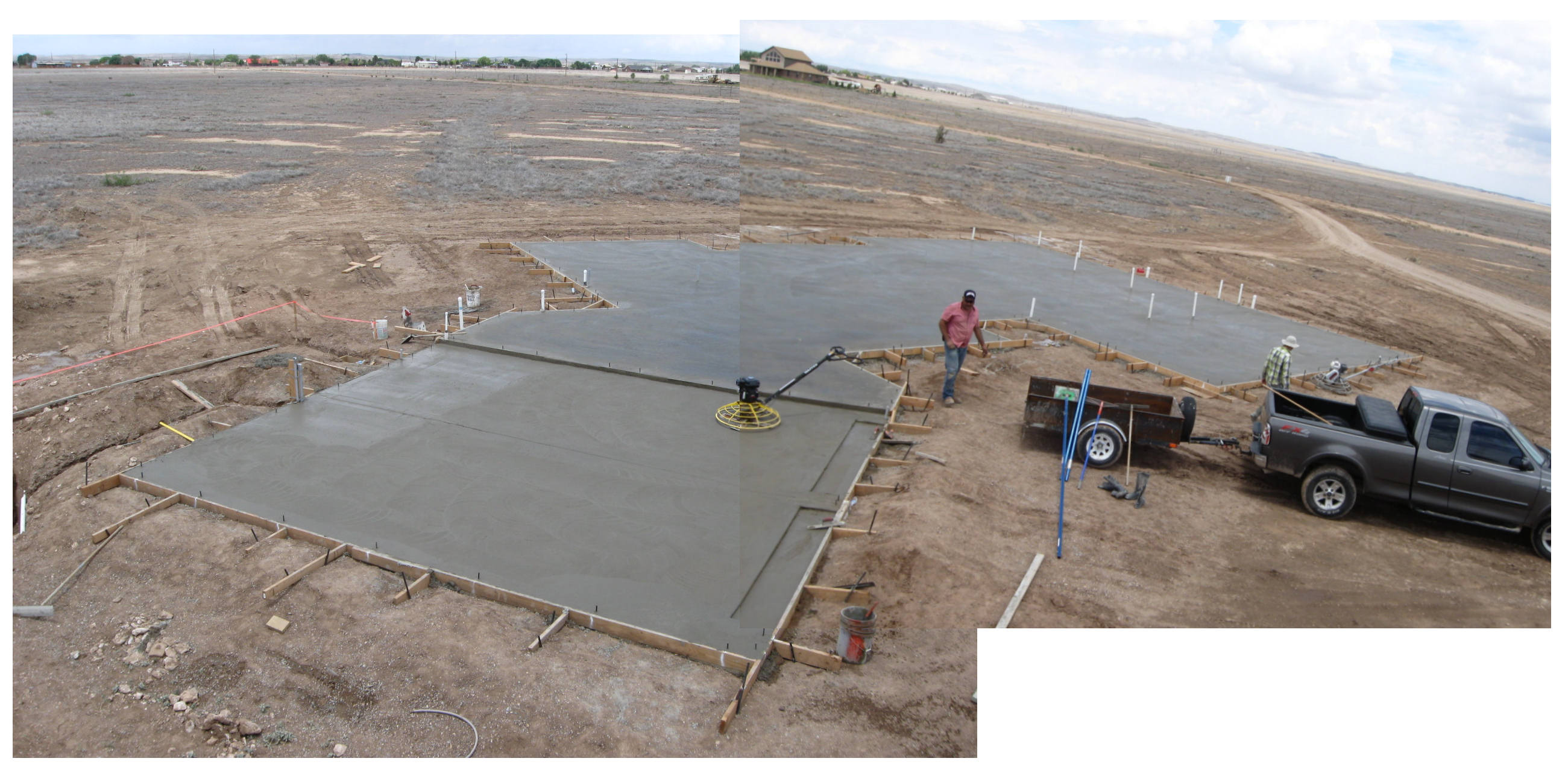
… starting a new phase of life.


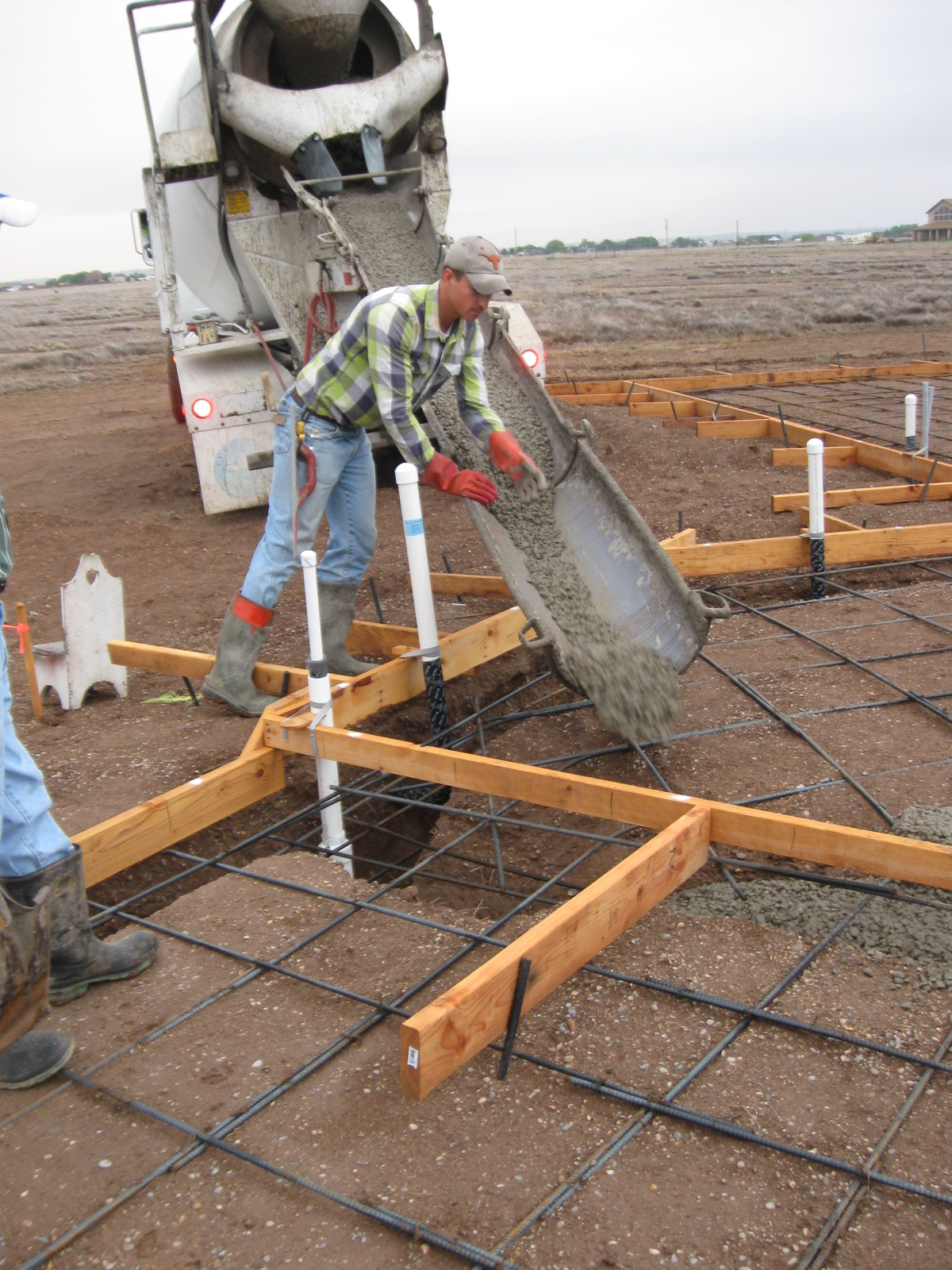
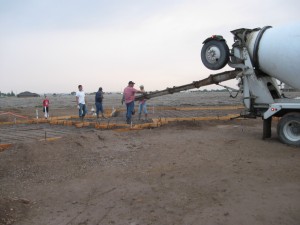
After several weeks’ worth of preparation (I had no idea there was so much involved before we did this ourselves), the foundation pour happened! Two nights before the pour (Sunday evening), we got a wonderful heavy rainfall. We were concerned at first that it might do damage to the trenches, but all was well. Our concerns over the muddy road were also unfounded.
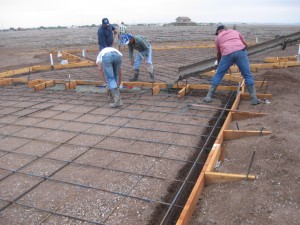
Then Monday evening, we got another heavy rainfall (have I mentioned that we have not had any rain since May prior to this?). Again, we were concerned over the road conditions and the possible damage to the trenches. At 5:05 a.m., the subcontractor who would be doing the actual pour pulled into our drive. He said all was well with the road and the trenches, so the pour was on! Soon after, his son, cousin and two other workers arrived. At just after 6:00 a.m., the first concrete truck arrived.
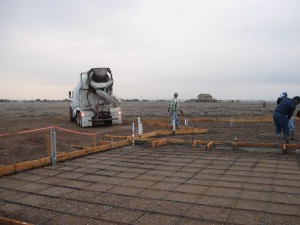
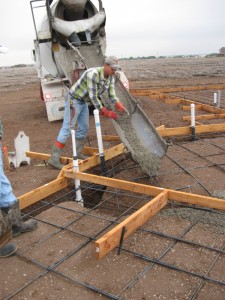
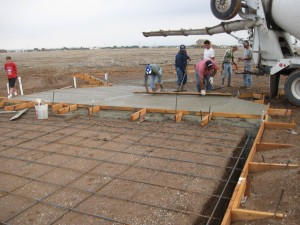
They began with the footers, starting with the wall between the house and garage. Since there is a step-down between house and garage, that portion needed to dry a bit before the lower garage level would be poured. Pouring it first allowed the braces to be removed before the garage pour.
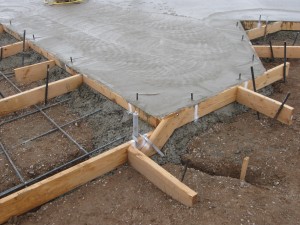
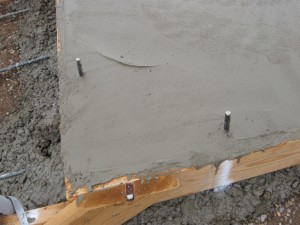
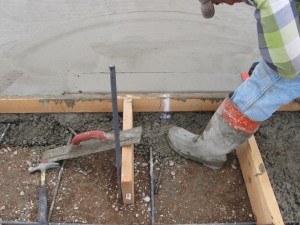
The subcontractors worked really well together and did a great job. If you are interested in getting concrete work done in SE New Mexico, we would highly recommend them (Samuel Castro 575-420-6615). We were also very happy with the service offered by Roswell Ready Mix (575-622-1186) . They have a large fleet of trucks and were able to handle the timing required for a good steady supply of concrete for the subcontractor.
We chose to have 3000 psi concrete plus the added fiberglass to add more strength to the foundation. Since we are considering doing a concrete floor stain, we want to try to avoid even small surface cracking as much as possible.
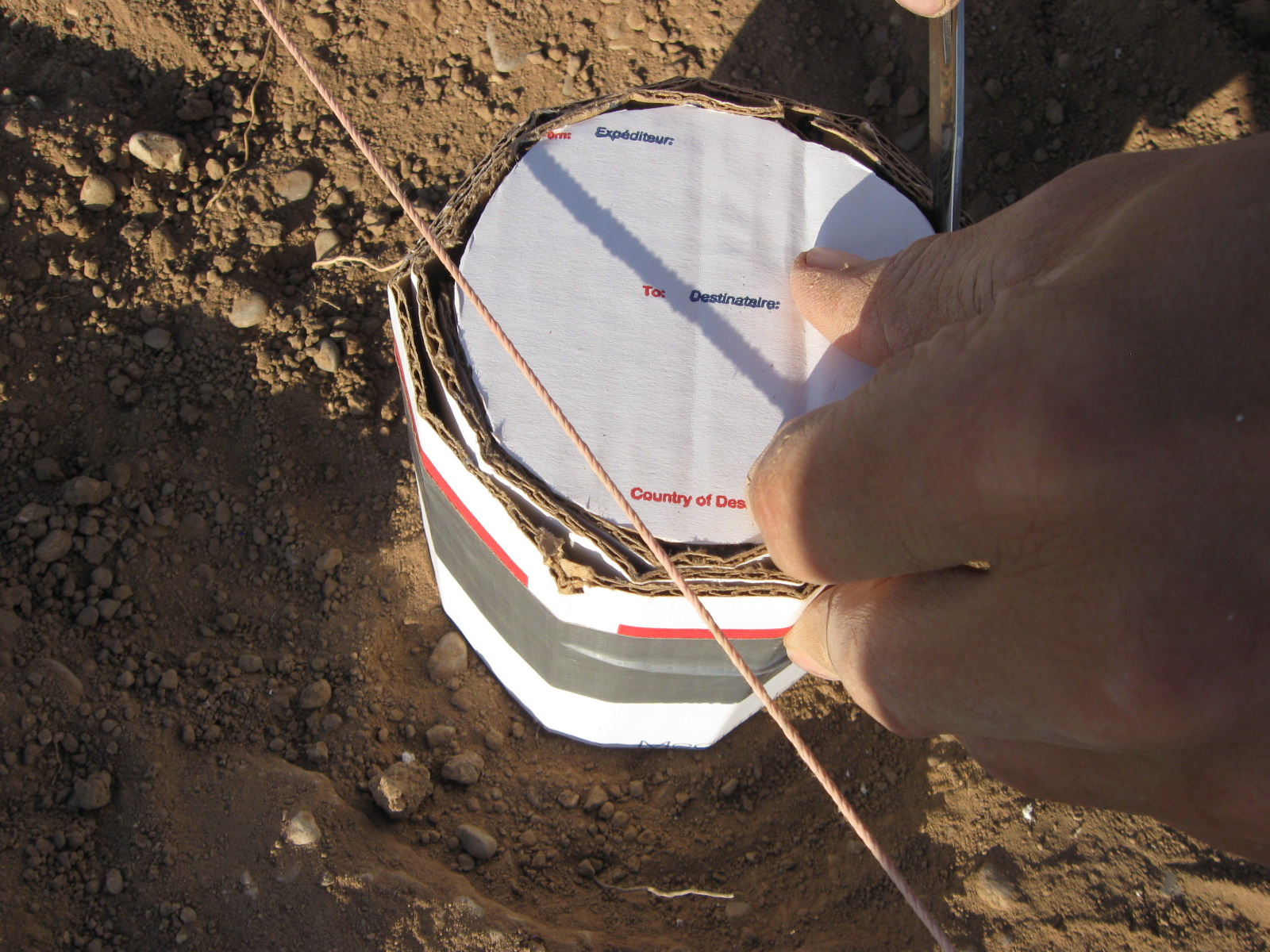
In order to protect the plumbing from the concrete during the pour, after the pipes for Showers, Toilets and Bathtubs are cut to 1/2″ below the finished surface, sealed with duct tape and then protected with cardboard. For the toilet drains, three layers of cardboard is fitting around the PVC and one layer of cardboard is cut to size for the top. For shower and tub drains, a cardboard box is cut to the correct height, filled with filldirt and sealed shut. A small amount of fill dirt is placed on the box flaps to hold its position. This allows the concrete to be poured and smoothed right over the tops of these drains. After the pour, the openings can be accessed by chipping away the small amount of concrete on the tops.
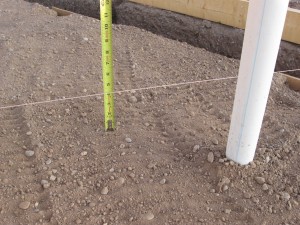
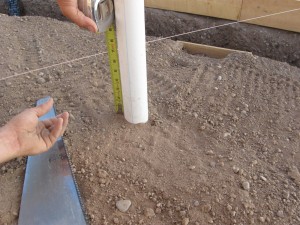
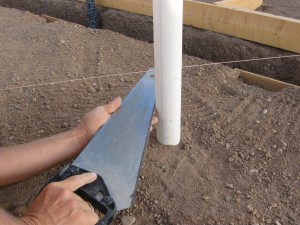
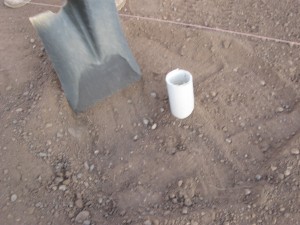

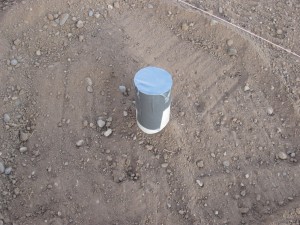
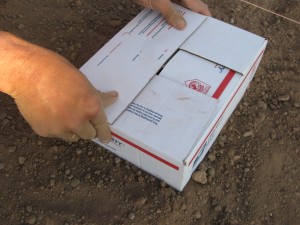
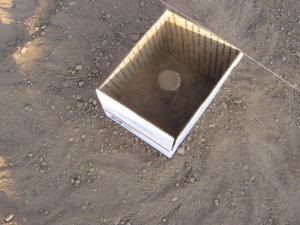
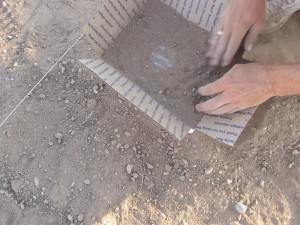
Toilet drain dab-outs are slightly different, so a separate set of photos also follow:
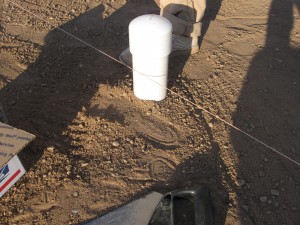
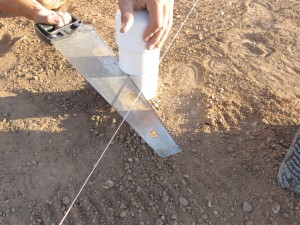
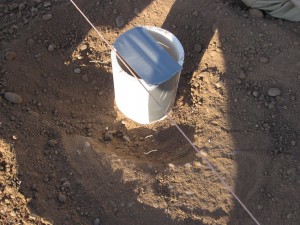

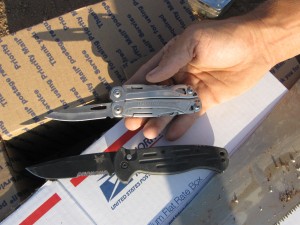

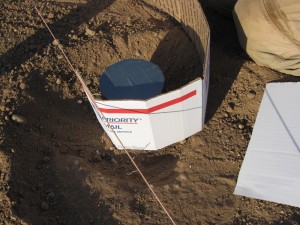
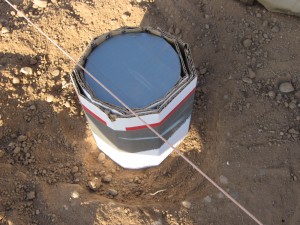
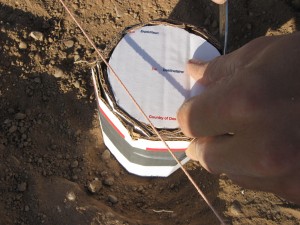

Since we are doing all the prep work ourselves for the slab foundation, we also did the installation of the rebar for the foundation. We did get some help from a couple of local construction workers who worked with us for an hourly wage. That helped a great deal and made the work go much more quickly. The entire family did learn how to wire rebar and how to insert support rebar for the footers. Here are a few photos of the process:
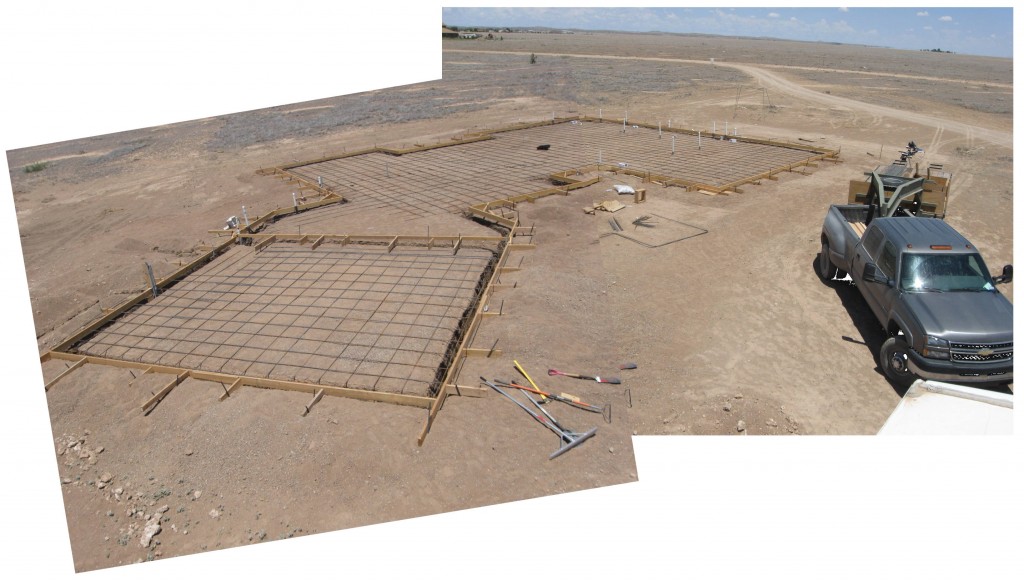


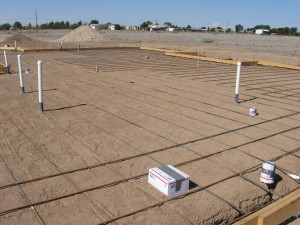

I immortalized the final bit of footer cleanout with this video:
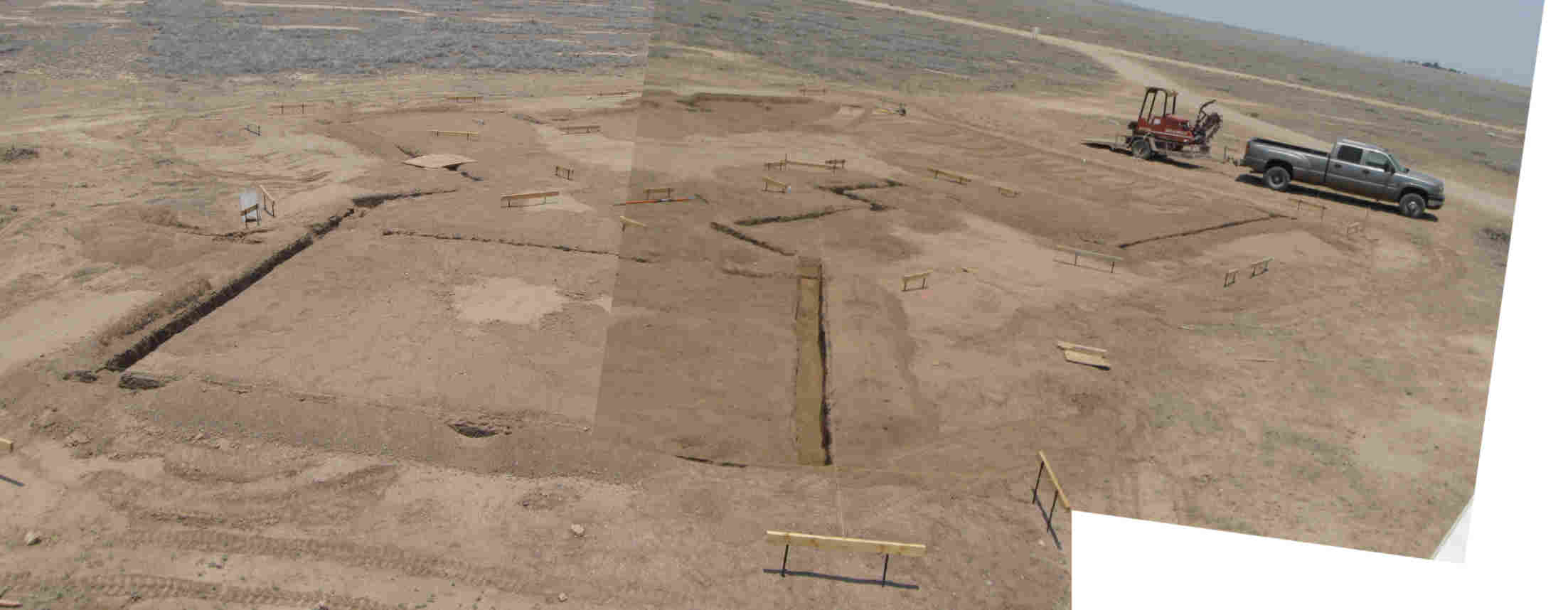

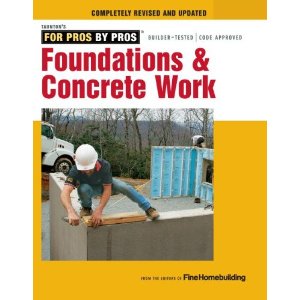 We decided to tackle our own foundation. The estimates we are receiving for much of the work on the house are in most cases double the cost of doing doing it myself. The cost for labor is very high, and sub contractors are adding a percentage on top of the cost of materials. As a result I have decided to manage my own monolithic foundation pour. I will do everything except the actual pouring of concrete. I have a sub who will inspect the pre-work, make recommendations for improvements, if any, and bring a crew to mash the mud into the holes and smooth it all out.
We decided to tackle our own foundation. The estimates we are receiving for much of the work on the house are in most cases double the cost of doing doing it myself. The cost for labor is very high, and sub contractors are adding a percentage on top of the cost of materials. As a result I have decided to manage my own monolithic foundation pour. I will do everything except the actual pouring of concrete. I have a sub who will inspect the pre-work, make recommendations for improvements, if any, and bring a crew to mash the mud into the holes and smooth it all out.
Lacking an experience in concrete work other than to watch it done several times, I turned to literature to learn as much as I could. I found the book, Foundations and Concrete Work, published by the editors of Fine Homebuilding, to be an excellent reference and source of information which ultimately boosted my confidence in tackling the job.
The book has sections dealing with; the basics of concrete, the basics of foundations, working with rebar, concrete tools, and information on various types of foundations. The book is more geared towards the northern tier where footers, stem walls and floor joists or basements are built. There was little on the peculiarities of the monolithic pour which is prevalent in southwest residential construction. I found the basic information to be be very useful. The section on the use of rebar and how to tie the various portions together was a great help. In addition the discussions of compacting soil was helpful with building the pad. Many of the techniques discussed in the section had a bearing on how we built up the foundation pad. I would recommend this book for the novice homebuilder and give it 4 out of 5 stars.